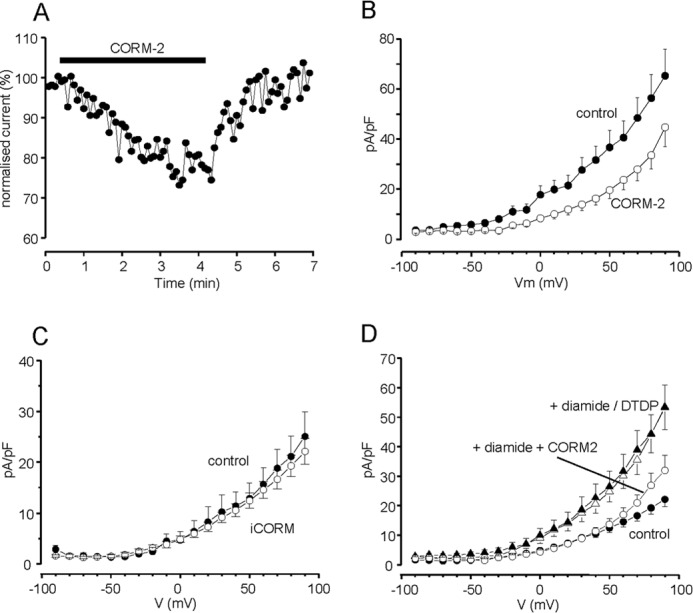FIGURE 6.

CO inhibits K+ currents and the oxidant-induced K+ current upsurge in DAOY cells. A, example time course of the reversible inhibitory effect of CORM-2. Currents were evoked by successive step depolarizations from −80 to +50 mV and CORM-2 (30 μm) was applied for the period indicated by the bar. Current amplitudes are normalized to those evoked by the first 10 depolarizations. B, mean (± S.E., n = 19 cells) current density versus voltage relationships in DAOY cells under control conditions (solid circles) and during exposure to CORM-2 (30 μm; open circles). CORM-2 caused significant reductions in current density (p < 0.05-p < 0.001, paired Student's t test) over the voltage range +10 to +90 mV. C, mean (± S.E., n = 10 cells) current density versus voltage relationships in DAOY cells under control conditions (solid circles) and during exposure to iCORM (30 μm; open circles). D, mean (± S.E.) current density versus voltage relationships determined in control cells (solid circles; n = 17), following exposure to 100 μm DTDP (solid triangles, n = 12) or 200 μm diamide (open triangles, n = 10) and following exposure to diamide in the presence of 30 μm CORM-2 (open circles, n = 8), as indicated. Effects of oxidants were significant (p < 0.05 - p < 0.01; unpaired t-tests), but diamide was without significant effect in the presence of CORM-2.
